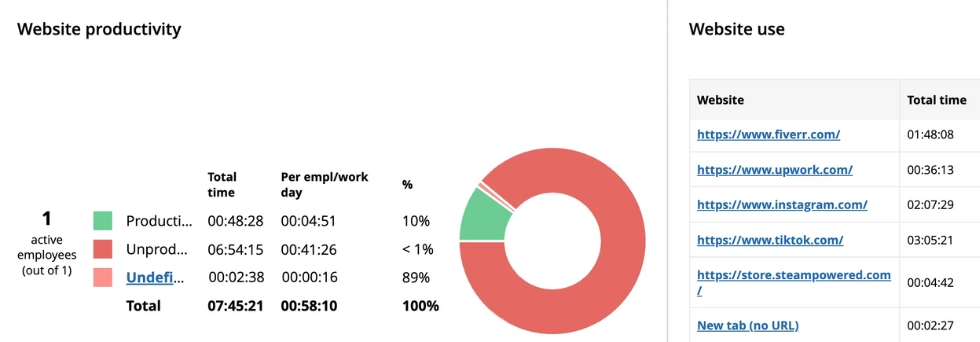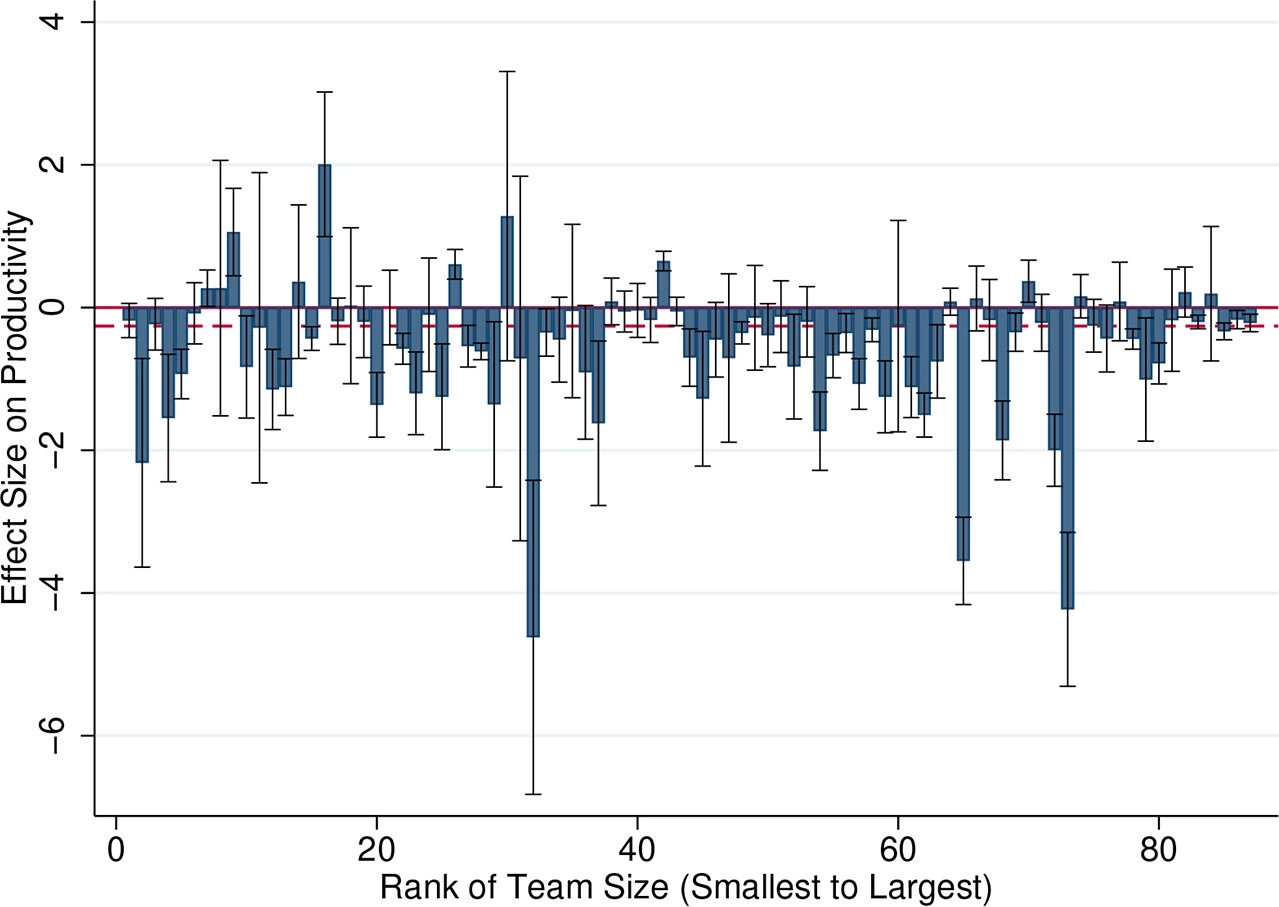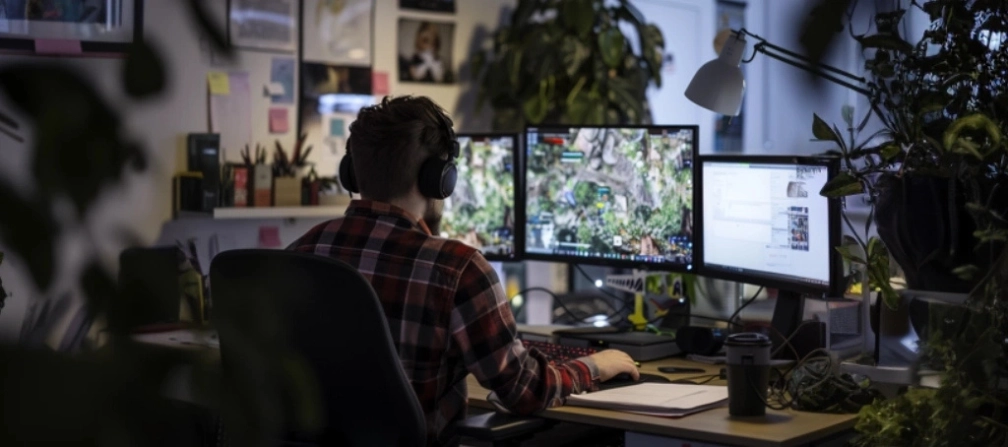Everything seemed obvious, but…
At first, everything looked trivial. Years of management experience told her that the employees were most likely working overtime. In recent weeks, a team was overwhelmed with tasks because they had to finish a large-scale project. “They are burned out,” was her conclusion. Anabel got approval from the CEO to implement WorkTime employee monitoring in the marketing department to confirm her assumption. But she wasn’t even close to the truth.The results were shocking: employees are regularly outsourcing virtual assistant services to perform their tasks and remain idle for most of their workday.
AI almost ruined the project
The situation became clear after the marketing manager looked through the reports. 1. Internet productivity reports showed that a designer regularly outsourced virtual assistant to generate content. 2. Copywriters also overuse virtual assistant outsourcing solutions. What’s more, one of the writers remained idle most of the time. 3. Login monitoring uncovered employees who log out 4 hours before the actual workday finishes. 4. An App productivity report detected that an SMM manager mostly used unproductive apps. He outsourced his tasks for a virtual assistant and played games instead of working.
If the company did not implement WorkTime to monitor employee productivity on time, the marketing team will likely fail their project.This case became a challenge for the company, especially for the head of marketing. She worked hard to build a strong team of highly effective and professional specialists. However, the company got a quality drop, time cheating, and poor AI-generated content instead of superior results.
Combating outsourcing-virtual-assistant fraud
At first, the company’s authority planned to ban the use of AI tools. WorkTime monitors website usage and detects AI-related tools or apps. If required, they can be blocked. Still, the executives understood that it would be a great mistake. The employees should stay up-to-date with modern technologies and the ways of their effective implementation into their work. They won’t be competent specialists if they do not know what is happening in the tech world. AI and future of work are interrelated anyway.That’s why the company decided to set up clear guidelines, showing when and how to use a virtual assistant appropriately. WorkTime was useful in achieving this goal, as it helped to control the usage of different types of virtual assistants and prevent the consequences of outsourced virtual assistant overuse. After this case in the marketing department, other company departments also implemented WorkTime for employee monitoring on a regular basis.AI tools can be a good assistant, but employees should not overuse them to perform their direct responsibilities. Otherwise, it leads to a quality drop.
“CheatGPT” - a single case or a new reality?
Worth mentioning is that the incident taking place in the marketing department is not a single case.Artificial intelligence outsourcing became so widespread that it was already called “CheatGPT” in some sources.
Covert AI outsourcing is much easier with remote
Business Insider discussed several cases of employees using generative AI tools discreetly to perform their jobs while being remote. Some workers claimed that they could easily outsource virtual assistant while working remotely without any fear of being uncovered. The same happened in the case of the marketing department—working from home made things worse. Employees were sure that nobody would know the work they outsource to a virtual assistant or other AI tools was not done by them during the working day.Did you know? Sam Altman, CEO of OpenAI, has an anti-remote attitude. He claimed that a full remote was a big mistake, resulting in a loss of creativity among tech employees.Research on work from home and productivity by Gibbs, Mengel, and Siemroth showed that remote work significantly decreased productivity. As we can see on a chart, remote work damaged the productivity of almost all teams participating in the study.

Source: Gibbs, M., Mengel, F., & Siemroth, C. (2023). Work from Home and Productivity: Evidence from Personnel and Analytics Data on Information Technology Professionals. Journal of Political Economy Microeconomics.
That’s why we observe a back-to-the-office trend in 2024 because the importance of team productivity cannot be overestimated.WorkTime is effective employee monitoring for remote, in-office, and hybrid teams.
How to use AI at work and fail?
For Anabel’s team, AI became the major cause of decreasing quality. So what were the main pitfalls of content generated by an outsourced virtual assistant? 1. AI-accuracy issues. Very often, the information is not reliable or inaccurate, decreasing the quality of written content; 2. Lack of creativity. AI-generated designs are mostly recognizable, making the email and website look cheap; 3. Poor customization of outsourced support. The unnatural language pushes potential customers away. The company could also face these AI-related risks: 1. Security risks. Hidden usage of AI tools could lead to confidential data leakage; 2. Sharing sensitive information. Giving tasks to outsource to a virtual assistant can reveal corporate secrets to competitors; 3. Reputational risk. Poor quality content can damage the company’s image in the market.Why do employees hide using AI at work?
1. Employees worry that they can be fired because the majority of their responsibilities are automated; 2. When employers don’t know that the content is generated by artificial intelligence, they judge it unbiased. 3. Cheating. Workers cheat time or simply outsource to a virtual assistant almost all their duties and relax.68% of 5,067 respondents who used AI at work claimed that they did it discreetly, a Fishbowl study reports.WorkTime offers 70+ non-invasive reports to analyze employees' productivity, attendance, active time, and Internet use for in-office or remote formats.
AI or human? WorkTime knows the truth
Anabel’s story confirms the significance of monitoring and preventing the risks of outsourced virtual assistant covert use. With the rapid development of AI tools, there will be a greater challenge for owners to protect their business projects. Apart from some risks, using AI at work has a lot of benefits. So, it does make sense to find out what can a virtual assistant do for my business without harming the brand’s quality, security, and image.Banning AI tools at work is not the best solution. The more effective way is to establish norms for effective and transparent implementation of artificial intelligence.WorkTime monitoring software perfectly copes with creating a productive, respectful, and transparent work environment with no space for productivity damage or AI cheating. Start a 14-day free trial right now to try all the features!



